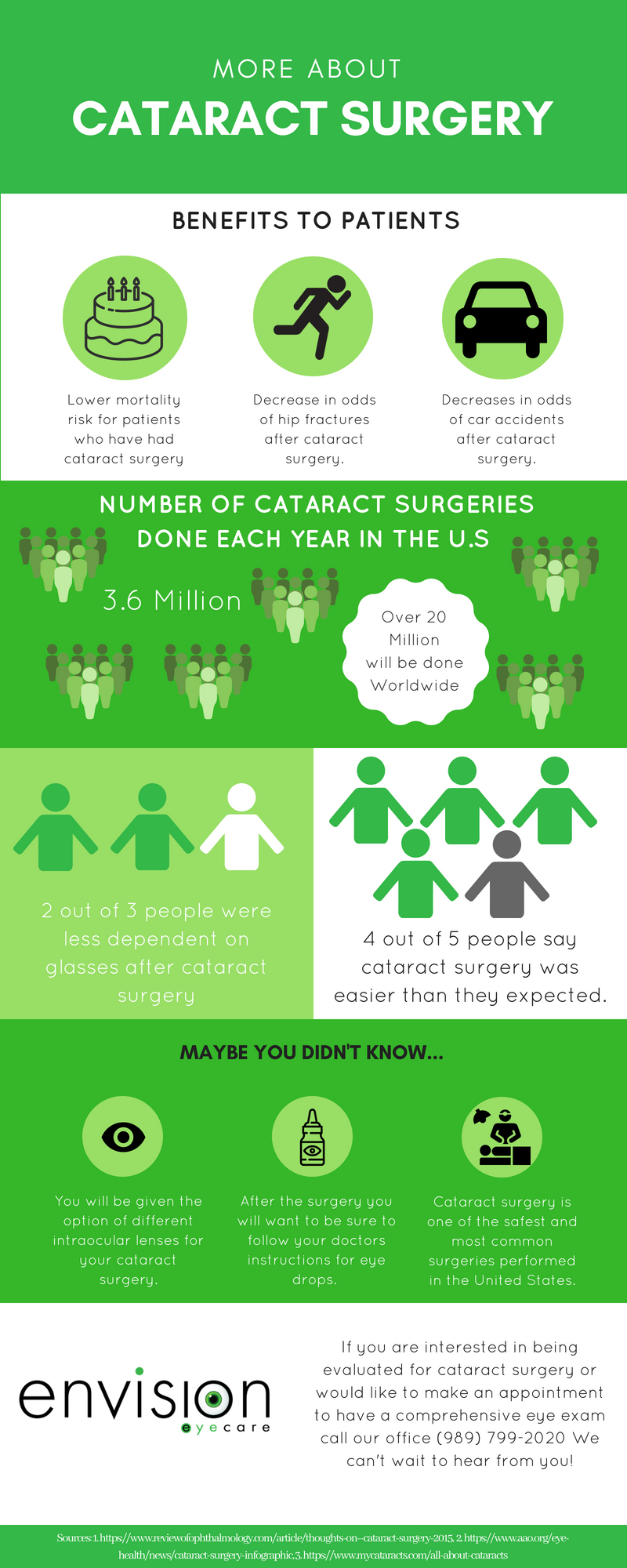As a cataract doctor, your day starts with a complete eye examination, where you examine clients' vision and lens quality. You understand exactly how crucial it is to recognize cataracts properly. When just click the following webpage , you prepare for surgical procedure, ensuring every information is made up. However the obstacle does not end there. The real journey unfolds in the operating room, where precision is essential. What takes place following might define a patient's visual future.
The Diagnostic Process: Identifying Cataracts
When it comes to diagnosing cataracts, quality is vital. You'll begin with a comprehensive eye assessment, where you'll assess visual acuity and look for any indications of cloudiness in the lens.
Throughout this procedure, you'll make use of specific equipment, such as a slit lamp, to obtain a thorough sight of the eye's structure. You'll likewise perform a dilated eye exam to assess the lens and retina better.
Collecting your patient's medical history is vital, as it aids identify threat elements like age, diabetic issues, or previous eye injuries.
After analyzing the outcomes, you'll figure out the presence and intensity of cataracts. https://lasikflap07384.blogadvize.com/44128519/learn-about-the-crucial-steps-associated-with-cataract-surgical-treatment-covering-every-little-thing-from-pre-operative-setups-to-healing-methods-and-find-what-you-can-anticipate-during-this-considerable-experience ensures you provide the very best recommendations for therapy, establishing the stage for the following steps in their treatment.
The Surgery: Precision in Action
After diagnosing cataracts and going over treatment options, you get ready for the procedure, where precision is paramount.
cataract surgery age 90 enter the operating room, donning sterile handwear covers and a mask. The client rests pleasantly under brilliant lights, all set for the change.
You begin by carrying out local anesthetic, ensuring they really feel no discomfort. With a consistent hand, you make a small incision in the cornea, utilizing innovative techniques to remove the gloomy lens.
You meticulously place the man-made intraocular lens, aligning it flawlessly for optimal vision. Throughout the treatment, you monitor vitals and adjust as needed, maintaining focus on the job.
In simply a short time, you'll have restored your patient's sight, a gratifying outcome for both of you.
Post-Operative Treatment: Making Certain Ideal Healing
When the surgical procedure is full, your role changes to making certain the client's smooth recovery.
You'll begin by providing clear post-operative directions, worrying the significance of putting on the eye guard and taking recommended medications. Remind them to avoid rubbing their eyes and taking part in exhausting tasks.
Set up a follow-up visit within a couple of days to check healing and attend to any type of worries. Encourage people to report any type of signs of infection, such as raised inflammation or discharge.
In addition, review the significance of using man-made splits to alleviate dry skin. Assistance their emotional wellness by assuring them that visual improvements may require time.
Verdict
In a cataract surgeon's day, you witness the trip from diagnosis to recovery. You see the precision in surgical treatment and the treatment taken post-operation to guarantee your ideal recovery. Via this experience, you get clarity not simply in vision, yet in recognizing the whole procedure. The depend on established between you and your surgeon is critical, paving the way for a smoother recovery. With the appropriate support, you're on your method to delighting in a brighter, clearer world.
